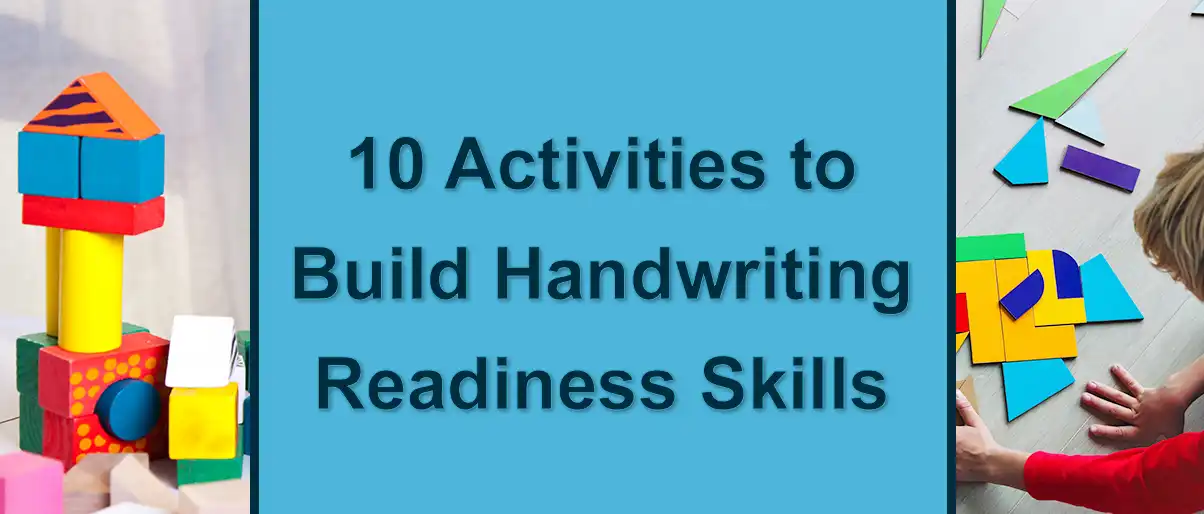
7 Ways to Keep Kids Writing While Schools Are Closed
Most states have now closed all of their schools due to the COVID-19 pandemic, and we don’t know whether they’ll reopen this school year. Some districts have sent home assignments for students or implemented online school, while others are still considering options for continued learning during these unprecedented circumstances.
Much like summer slide, there is now the danger of students regressing during this extended break from their education. The recommended social distancing even limits options like library visits or study groups.
Writing is a skill that kids use for every subject, so it’s important for them to continue building this skill. Here are seven writing ideas for kids to try at home.
7 Ways to Keep Kids Writing at Home
1. Keep Those Handwriting Skills Sharp!
Handwriting and writing go hand in hand, especially in elementary school, when most assignments, quizzes, and tests are still done with pencil and paper. So, while kids are at home, it’s important to exercise their handwriting skills every day.
Writing by hand in general will help kids continue to build their handwriting skills, so encourage them to complete the below writing activities by hand (which will also boost learning and creativity!).
We also offer a variety of free resources on our website!
2. Write About the Pandemic
Sometimes it’s best to address stressful topics head-on. Writing can be a great outlet for fear and anxiety – and kids are sure to be anxious about what’s going on in the world right now.
To help kids sort through their feelings about the pandemic and regain a sense of control, try these writing prompts:
- What do you know about COVID-19?
- What questions do you have about COVID-19?
- What can you do to help out at home while school is closed?
- Make a list of safety rules and/or ways to stay healthy.
- When I found out school was closed, I felt…
- Right now, I am most worried about…
Using these prompts to discuss the facts of our current situation (in an age-appropriate way, of course) can help kids understand what’s happening right now and ease some of their fears.
3. Keep a Diary or Journal

Have kids keep a diary or journal that they write in each day. (This can be done in combination with #2.) They can record their daily activities and how they feel about what’s going on in the world, what the weather is like each day, or what they see when they look out the window. If they’re feeling creative, they can write stories, songs, or poems. They can use different colored pens and pencils and draw pictures to brighten up the pages.
A gratitude journal can be particularly helpful during these trying times. Have kids write three things they’re grateful for each day, or offer prompts to get them thinking about what they’re grateful for:
- What are you most grateful for?
- What made you smile or laugh today?
- What is the best thing that happened to you today?
- Who are the people in your life who you are grateful for?
- What’s your favorite thing to do at home?
Giving thanks and focusing on the positive can be a great comfort when so much seems uncertain right now.
4. Combine Writing and Reading
It’s not just important for students to read; it’s also important that they understand what they read. Asking kids to write about what they read encourages them to slow down and focus on the content.
Try using a writing activity to encourage reading comprehension:
- Write a book report. The most obvious way for kids to show they understood what they read is to write a report. This can be as simple as writing a summary of the story or a more complex assignment that discusses characters, setting, theme, and plot.
- Write a book review. Kids can read a book and then write a review. What did they like? What didn’t they like? Sharing their opinion on the story will show how closely they followed the details.
- Write down new words. Have kids keep a list of new words they encounter. They can look up the words and write down the definitions to help them learn the meanings and spelling.
- Write a favorite quote. Kids can write out a favorite quote from the book they’re reading. Then, they can explain why they like the quote and why it’s important to the story.
5. Get Outside and Write

Although public parks are closed to limit social contact, fresh air and sunshine are beneficial for both mind and body. Whether you live in the city, suburbs, or country, kids can (and should!) still get outside and observe the world around them.*
Take a stroll in the woods, your backyard, or even down a city street and tell kids to take note of what they experience. They can take a notebook and record their findings, answering questions such as:
- What is the weather like?
- What types of plants do you see? How are they alike and different?
- Do you see any birds, bugs, or other animals? What are those animals doing?
- What do you hear and smell?
- How does being outside make you feel?
When you return inside, ask kids to write a story or essay about their experience. This activity provides an opportunity to practice writing, handwriting, coloring, creative thinking, observation skills, and even a variety of scientific topics.
* Following social distancing recommendations is extremely important right now. Please be mindful of any local regulations and restrictions.
6. Do an Interview
To encourage safe interaction with someone outside of the home, have kids interview an adult they know via phone or video chat. They can write their interview questions ahead of time and be prepared to jot down the answers.
If kids choose to call a grandparent or older friend/relative, they can ask questions like:
- What was life like when you were my age?
- How were things different? What was the same?
- What’s your favorite memory from your childhood?
- What has changed for the better?
If they want to interview someone about the pandemic, questions can include:
- How do you feel about the pandemic?
- What is the hardest part of having to stay at home?
- What are you doing to stay healthy right now?
- What is your job?
- Are you still going to work?
- Can you do your job from home?
- How has your life changed in the past few weeks?
7. Practice Descriptive Writing
Pick an object from anywhere in the house, or even outside. It can be anything – a piece of fruit, a fish tank, a plant, a toy, etc. Tell kids to study the object and write a description of it. Consider questions like:
- What color is it?
- How big is it?
- What is the texture like?
- What does it smell like?
- Is it warm or cold?
- Does it make noise?
- Is it hard or soft?
For a fun twist, kids can try writing about the object from the object’s perspective:
“I am a house plant. I have green, shiny leaves and I live in a big blue bowl full of dirt. I sit up high on a shelf in front of a window. I love the warm sunlight and I stretch my leaves toward it. Sometimes, I have orange flowers…”
Your little writers can even write about what the object observes the humans in the house doing throughout the day and draw pictures to complete the story!
Share Your Kids’ Writing!
If you try one of our ideas to keep kids writing, share your kids’ work with us! Post a picture of their writing on our Facebook page or email us at [email protected].




